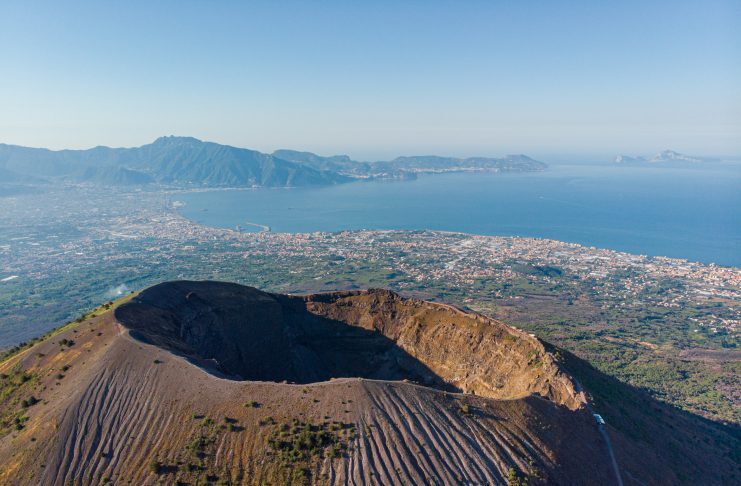The village of Afragola was situated near present-day Naples, about 10 miles from Mount Vesuvius. Owing to the level of preservation and the diversity of preserved plants at the site, researchers were interested to see if they could pinpoint the time of year when the eruption occurred.
Afragola was excavated over an area of 5,000 square metres, making it among one of the most extensively investigated sites of the Early Bronze Age in Italy.
In a paper published in the Journal of Archaeological Science: Reports, the researchers explain how the course of the eruption happened in different phases, starting with a dramatic explosion that sent debris traveling primarily to the northeast.
Tiziana Matarazzo, from the UConn Department of Anthropology said: "The site is exceptional, because Afragola was buried by a gigantic eruption of Vesuvius which tells us a lot about the people who lived there and the local habitat. By finding fruits and agricultural materials, we were able to identify the season of the eruption, which is usually impossible."
"The last phase brought mostly ash and water - called the phreatomagmatic phase — mainly dispersed to the west and northwest up to a distance of about 25 km's from the volcano," Matarazzo explains.
This phase buried the village in a thick layer of volcanic material which replaced the molecules of the vegetal macro-remains and produced perfect casts in a material called cinerite which are resistant to degradation, even after several millennia.
"Leaves that were in the woods nearby were also covered by mud and ash which was not super-hot, so we have beautiful imprints of the leaves in the cinerite," said Matarazzo.
There was also one storage building in the village where all the grains and various agricultural goods and fruits were gathered from nearby woods to be stored. The building caught fire probably due to the arrival of pyroclastic materials and collapsed, carbonising the stored vegetal materials inside.
Bronze Age Campanian Plain was home to a rich diversity of food sources, including a variety of grains and barley, hazelnuts, acorns, wild apples, dogwood, pomegranates, and cornelian cherry, all extraordinarily well-preserved in the aftermath of the volcanic eruption.
The evidence points toward the eruption happening in the fall, as the villagers amassed their food stores from the nearby woods.
Comment: Interestingly, a recent study revealed the likely date of the eruption of Vesuvius in the Roman era:
[...] proves the city was destroyed by Mount Vesuvius after 17 October AD79 and not on 24 August as previously thought...evidence such as autumnal fruits on branches found in the ashen ruins had suggested a later date since the 19th century.
The imprints of leaves found at the base of the trees along with ripe fruits are very indicative of the seasonality.
"This eruption was so extraordinary that it changed the climate for many years afterwards.
Comment: There was a lot more going on than just a disastrous eruption of Vesuvius:
The column of the Plinian eruption rose to basically the flight altitude of airplanes. It was unbelievable. The cover of ash was so deep that it left the site untouched for 4,000 years. Now we get to learn about the people who lived there and tell their stories," said Matarazzo.
University of Connecticut
https://doi.org/10.1016/j.jasrep.2022.103587




Reader Comments
to our Newsletter